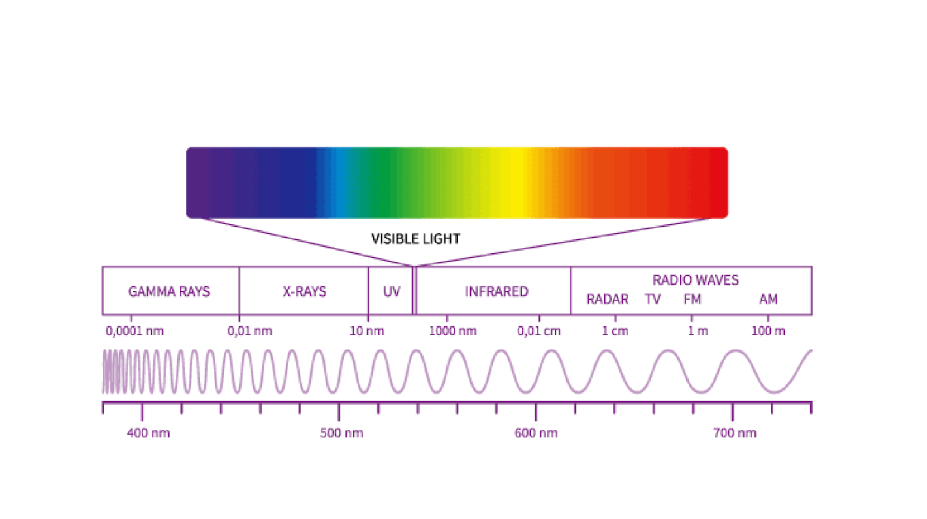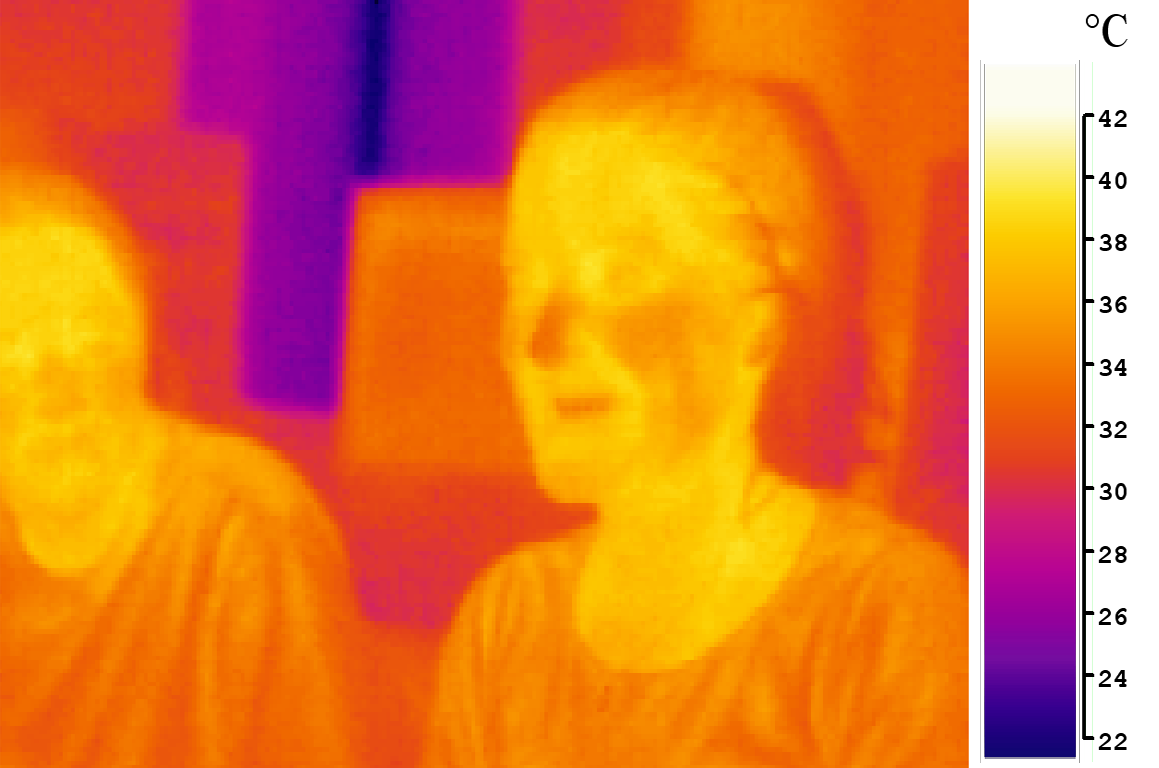Exploring the Electromagnetic Spectrum: A Handy Guide

The electromagnetic spectrum is a fundamental concept in physics and plays a crucial role in various fields of science and technology.
In this comprehensive guide, we will delve into the diverse aspects of the electromagnetic spectrum, its importance, and practical applications.
Join us on this journey exploring the fascinating scientific world!
What is Electromagnetic radiation?
Electromagnetic radiation is the energy that electromagnetic waves carry as they travel through space or a medium.
It encompasses a broad range of waves, each with distinct properties and applications.
Understanding electromagnetic radiation is essential in comprehending how energy is transmitted and interacted with in various fields.
Electromagnetic radiation consists of waves such as radio waves, microwaves, infrared radiation, visible light, ultraviolet radiation, X-rays, and gamma rays.
These waves differ in their wavelengths or frequencies and are categorized based on their characteristics.
Visible light is the portion of the electromagnetic spectrum that is visible to the human eye.
It is responsible for the colors we perceive and plays a vital role in photography and illumination.
Electromagnetic radiation encompasses a wide range of waves that carry energy and play significant roles in communication, technology, healthcare, and scientific research.
By understanding the characteristics and applications of each type of wave, we can harness their power to revolutionize various industries and improve our daily lives.
Types of Electromagnetic Radiation
Electromagnetic radiation or spectrum can be divided into different types based on the wavelengths
The types of electromagnetic radiation are listed here in the order of the longest to shortest wavelengths.
Radio Waves
Radio waves are a type of electromagnetic radiation with the longest wavelengths in the electromagnetic spectrum.
They are widely used in communication, broadcasting, and various technological applications.
Understanding the properties and applications of radio waves is crucial for comprehending their impact on our modern world.
Radio waves are primarily used for wireless communication.
They enable us to transmit information over long distances without the need for physical wires or cables.
From radio broadcasts to cell phone signals and television broadcasts, radio waves play a pivotal role in facilitating communication between devices and networks.
They allow us to stay connected with loved ones, access news and entertainment, and communicate in emergency situations.
In addition to communication, radio waves are also utilized in radar systems.
Radar, short for “Radio Detection and Ranging,” relies on radio waves to detect and track objects in the air, on land, or at sea.
Radar technology is employed in various fields, including aviation, maritime navigation, meteorology, and defense.
It enables us to detect aircraft, ships, weather patterns, and even monitor vehicle speed through Doppler radar.
Moreover, radio waves have found applications in medical imaging. Magnetic resonance imaging (MRI).
MRI uses radio waves in combination with strong magnetic fields to create detailed images of the body’s internal structures.
This non-invasive technique aids in diagnosing various medical conditions and allows healthcare professionals to visualize organs, tissues, and abnormalities without the use of harmful ionizing radiation.
Furthermore, radio waves have contributed to the field of astronomy.
Radio telescopes are powerful instruments that detect and analyze radio waves emitted by celestial objects in space.
They provide valuable insights into the universe, allowing astronomers to study distant galaxies, pulsars, quasars, and cosmic microwave background radiation.
Radio astronomy has significantly expanded our knowledge of the cosmos and continues to uncover new mysteries and phenomena.
Microwaves
Microwaves are a form of electromagnetic radiation with wavelengths shorter than those of radio waves and longer than those of infrared radiation.
They have a wide range of practical applications in fields such as communication, cooking, satellite technology, and scientific research.
One of the most common uses of microwaves is in cooking.
Microwave ovens utilize microwaves to heat and cook food quickly and efficiently.
These appliances generate microwaves that excite water molecules present in the food, causing them to vibrate rapidly and generate heat.
This results in faster cooking times and convenience for households and food establishments.
Microwaves also play a crucial role in wireless communication systems.
They are employed in various technologies, including mobile phones, Wi-Fi, and satellite communication.
Microwaves allow for the transmission of signals over long distances without the need for physical wires.
This has revolutionized the way we communicate and stay connected in today’s digital age.
In satellite technology, microwaves are used for communication between ground stations and satellites in space.
Satellites receive signals from ground stations in the form of microwaves, amplify them, and transmit them back to other locations on Earth.
This enables satellite television, global positioning systems (GPS), weather monitoring, and other satellite-based services.
Moreover, microwaves find applications in radar technology.
Radar systems use short-wavelength microwaves to detect and track objects in various environments.
They are utilized in air traffic control, weather monitoring, military surveillance, and collision avoidance systems in vehicles.
Microwaves enable accurate and reliable detection of objects by analyzing the reflected signals from their interactions with the surroundings.
In scientific research, microwaves are used in spectroscopy to study the properties of materials and molecules.
Microwave spectroscopy allows scientists to analyze the rotational motion of molecules, providing insights into their structure and chemical properties.
This technique is utilized in areas such as chemistry, physics, and material science.
Infrared radiation
Infrared radiation, also known as infrared light or IR radiation, is a type of electromagnetic radiation that lies just beyond the visible light spectrum.
It is characterized by wavelengths longer than those of visible light, making it invisible to the human eye.
Infrared radiation has a range of applications across various fields, including technology, medicine, and environmental monitoring.
One of the key properties of infrared radiation is its ability to generate heat.
Infrared heaters utilize this property to provide warmth in applications such as space heating, industrial processes, and even outdoor heating for patios and terraces.
Infrared saunas use infrared radiation to directly heat the body, providing relaxation and therapeutic benefits.
Infrared radiation also finds extensive use in night vision technology.
Night vision devices capture and amplify the infrared radiation emitted by objects and convert it into visible light, enabling enhanced vision in low-light conditions.

This technology is employed by the military, law enforcement agencies, and security personnel for surveillance, navigation, and target acquisition purposes.
Thermal imaging is another important application of infrared radiation.
Thermal cameras detect and convert the heat emitted by objects into a visible image, allowing us to visualize temperature differences.
This technology is utilized in various fields, including building inspections, electrical diagnostics, firefighting, and medical diagnostics.
In the medical field, infrared thermography is employed for non-invasive monitoring of body temperature and detecting abnormalities and diseases.
Infrared remote controls are widely used in homes and electronic devices.
They emit infrared signals that are picked up by receivers, allowing users to control televisions, audio systems, air conditioners, and other appliances from a distance.
Furthermore, infrared radiation plays a significant role in environmental monitoring and Earth observation.
Satellites equipped with infrared sensors capture data related to land and ocean temperatures, cloud cover, and vegetation health.
This data is used in climate studies, weather forecasting, agriculture, and ecological research.
In the realm of materials science, infrared spectroscopy is employed to analyze the chemical composition and molecular structure of substances.
By studying how infrared radiation is absorbed or reflected by different materials, scientists can identify and characterize various compounds, including organic molecules and polymers.
Visible Light Spectrum
Visible light is the portion of the electromagnetic spectrum that is visible to the human eye.
However animals like snakes can see only the infrared spectrum.
It is characterized by wavelengths ranging from approximately 400 to 700 nanometers, with each wavelength corresponding to a different color.
Understanding visible light and its properties is crucial in fields such as optics, photography, and vision science.
Visible light consists of a spectrum of colors, commonly represented as red, orange, yellow, green, blue, indigo, and violet, arranged in order of increasing energy and decreasing wavelength.
This spectrum of colors can be observed when white light passes through a prism or when sunlight interacts with raindrops, creating a rainbow.
The human eye is sensitive to this specific range of wavelengths, allowing us to perceive and distinguish colors.
Light enters the eye through the transparent cornea, passes through the pupil, and is focused by the lens onto the retina at the back of the eye.
Specialized cells in the retina called cones are responsible for detecting and processing different wavelengths of light, enabling us to see the rich variety of colors in the world around us.
In addition to its role in vision, visible light has numerous practical applications. In photography, visible light is used to capture images by exposing light-sensitive film or digital sensors to different colors and intensities of light.
By manipulating the exposure and wavelength of visible light, photographers can create stunning visual compositions and convey emotions through their images.
Optical technology heavily relies on visible light for various purposes.
Devices such as microscopes, telescopes, and spectrometers utilize visible light to observe and analyze objects at different scales.
The properties of visible light, such as reflection, refraction, and diffraction, are harnessed in the design of lenses, mirrors, and prisms to manipulate light for imaging, measurement, and scientific research.
Visible light also plays a vital role in illumination and lighting.
From incandescent bulbs to fluorescent lights and LEDs, artificial light sources emit visible light to brighten our homes, workplaces, and public spaces.
The color temperature of light, measured in Kelvin, determines the perceived warmth or coolness of the light emitted, influencing the ambiance and mood of a setting.
Furthermore, visible light is essential in the field of colorimetry, which involves measuring and quantifying color.
Industries such as printing, textiles, and graphic design rely on accurate color reproduction and matching, which is achieved through precise control and measurement of the properties of visible light.
UltraViolet Radiation
Ultraviolet (UV) radiation is a type of electromagnetic radiation with wavelengths shorter than those of visible light and longer than X-rays.
Despite being invisible to the human eye, UV radiation has significant effects on various aspects of our lives, including health, technology, and the environment.
Understanding the properties and applications of UV radiation is crucial in protecting ourselves and harnessing its benefits.
UV radiation is divided into three categories based on wavelength: UVA, UVB, and UVC.
UVC radiation has the shortest wavelengths and is highly energetic, but it is mostly absorbed by the Earth’s atmosphere and does not reach the surface.
UVA radiation has longer wavelengths and is less energetic, while UVB radiation has intermediate wavelengths and is more energetic.
Both UVA and UVB radiation reach the Earth’s surface and have distinct effects.
One of the primary sources of UV radiation is the Sun.
Exposure to UV radiation has both positive and negative consequences.
On the positive side, UV radiation is responsible for the synthesis of vitamin D in the skin, an essential nutrient for bone health.
However, overexposure to UV radiation can lead to harmful effects such as sunburn, premature skin aging, and an increased risk of skin cancer.
It is crucial to protect ourselves from excessive UV exposure by wearing sunscreen, protective clothing, and sunglasses, and by seeking shade during peak sunlight hours.
UV radiation has numerous applications in various fields.
In medicine, UV radiation is used in phototherapy, a treatment for certain skin conditions such as psoriasis, vitiligo, and eczema.
UV light is applied directly to the affected skin to promote healing and alleviate symptoms.
UV radiation also finds applications in water and air purification.
UV disinfection systems utilize UV light to kill or inactivate microorganisms such as bacteria, viruses, and protozoa.
These systems are employed in water treatment plants, swimming pools, and air conditioning units to ensure safe and clean environments.
In forensic investigations, UV light is used to detect and analyze trace evidence.
UV radiation can reveal hidden fingerprints, bodily fluids, and certain substances that fluoresce under UV light. This technique aids in crime scene investigations and forensic analysis.
UV radiation is also important in astronomy.
By observing the UV radiation emitted by celestial objects, astronomers can gain insights into stellar evolution, the composition of stars and galaxies, and the presence of interstellar matter.
UV telescopes and satellites provide valuable data for studying the universe and expanding our knowledge of cosmic phenomena.
X-Rays and Gamma Rays
X-rays and gamma rays are the highest energy forms of electromagnetic radiation, with wavelengths shorter than those of ultraviolet (UV) radiation.
These types of radiation have unique properties and diverse applications in fields such as medicine, industry, research, and imaging technology.
X-rays are commonly known for their medical applications.
In medical imaging, X-rays are used to visualize the internal structures of the body, such as bones and organs.
X-ray machines emit a focused beam of X-rays that passes through the body, and the resulting image, called a radiograph, provides valuable diagnostic information.
X-rays are also used in dental examinations and mammography, aiding in the detection and diagnosis of various conditions and diseases.
In addition to medical imaging, X-rays have industrial applications. They are utilized in non-destructive testing (NDT) to inspect the integrity of materials and structures without causing damage.
X-ray diffraction techniques are employed in materials science and crystallography to study the atomic and molecular structures of substances, leading to advancements in fields such as metallurgy, chemistry, and materials engineering.
Gamma rays, on the other hand, are even more energetic than X-rays and are often produced during radioactive decay processes or nuclear reactions.
They are used extensively in radiation therapy for cancer treatment.
High-energy gamma rays are precisely targeted at cancerous cells to destroy them while minimizing damage to surrounding healthy tissue.
Gamma ray imaging techniques, such as positron emission tomography (PET), provide detailed information about the metabolic activity and function of organs and tissues, aiding in the diagnosis and monitoring of diseases.
In industrial applications, gamma rays are employed in the inspection and sterilization of products.
Gamma radiography is used to examine the integrity of welds, pipelines, and other critical structures.
Gamma sterilization is a common method to eliminate harmful microorganisms in medical equipment, food products, and pharmaceuticals.
Gamma rays also have applications in scientific research and astronomy.
Gamma-ray telescopes and detectors are used to study high-energy phenomena in the universe, such as supernovae, black holes, and gamma-ray bursts.
By observing these energetic events, scientists gain insights into the fundamental nature of matter, the behavior of particles, and the evolution of celestial objects.
It is important to note that both X-rays and gamma rays can be hazardous to living organisms at high doses and prolonged exposure.
Safety measures, such as shielding and appropriate dosage control, are implemented in medical, industrial, and research settings to protect individuals from the potential harmful effects of these high-energy radiations.
Importance and Applications of the Electromagnetic Spectrum
Understanding the electromagnetic spectrum is crucial for a wide range of scientific and technological advancements.
From telecommunications and satellite navigation to medical diagnostics and space exploration, numerous fields rely on harnessing the unique properties of electromagnetic waves.
The electromagnetic spectrum is a vast domain that underpins numerous scientific discoveries and technological innovations.
By exploring its various regions and applications, we gain a deeper understanding of how electromagnetic waves shape our world.
Whether it’s the radio waves that enable wireless communication or the X-rays used in medical imaging, the electromagnetic spectrum continues to revolutionize the way we live and interact with our environment.








